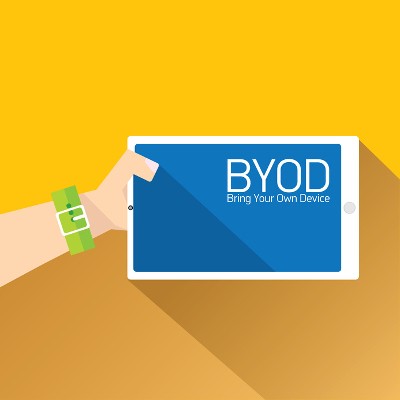Businesses are always trying to improve on efficiency, and one method they use to do so is mobile technology. Businesses invest in mobile technology like smartphones, laptops, and data plans for their employees with the expectation that it will help them be more productive, but the fact of the matter is that these investments are costly for the return. There is another approach businesses use: Bring Your Own Device, or BYOD, and it’s a great way to save capital while achieving the same levels of productivity from mobile technology.
PCSOFT Blog
Organizations are always trying to get more efficient. One way that businesses are able to accomplish this is by utilizing mobile computing. This used to mean that businesses would have to spend a bunch of money purchasing phones, data plans, and the like for their employees. Some time ago, businesses started to realize that they could improve their mobile strategies without this massive expense by enacting a BYOD policy. Let’s discuss what a BYOD policy is and how it does more than just save a business money.
Think how much has changed in the past 20 years. The Internet went from dial-up to broadband. Cellular networks have brought computing to more people through the use of computers that fit in your pocket. These mobile devices have changed the way that we communicate, changed the way business works, and changed the way we go about our daily lives. Let’s talk about how mobile is the predominant type of computing being used in society today.
There is no question that a small business can benefit from technology, as has been proven time and time again. However, an issue can arise if a business bites off more than it can chew, so to speak, and ultimately creates a spike in costs. A responsible business owner will resist this temptation and prioritize the solutions they need over the ones they want - building profitability and generating capital needed to make other improvements.
In this blog, we’ll examine some of the implementations that can deliver a good return on investment to a small business.
While smartphones can help businesses quite a bit, they can also be quite detrimental to their success. If you can get past the issues related to employees bringing their own devices to the workplace, then you’ll be able to save a considerable amount of time and money doling out mobile devices. However, you will need to make sure you have a mobile device management policy put in place so that you can control how those mobile endpoints interact with your business’ standing infrastructure and data.
Bring Your Own Device, or BYOD, continues to grow into one of the most accepted practices within an organization. Yet, one major problem has always plagued BYOD in the form of security. Thankfully, with the help of mobile device management, businesses are able to minimize this risk while leveraging the benefits that BYOD offers.
The concept of Bring Your Own Device has grown in popularity with employers in recent years. There’s no denying that a BYOD policy holds major benefits, but like any other policy, it has its drawbacks. What follows is a brief overview of some pros and cons to inform any business owner who’s considering BYOD in the workplace.







